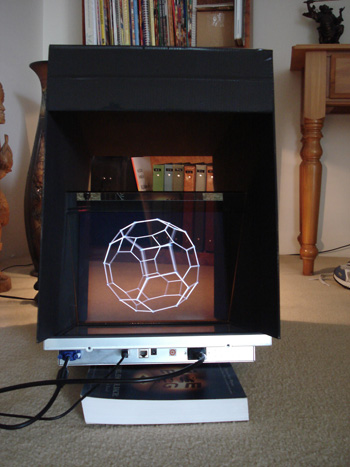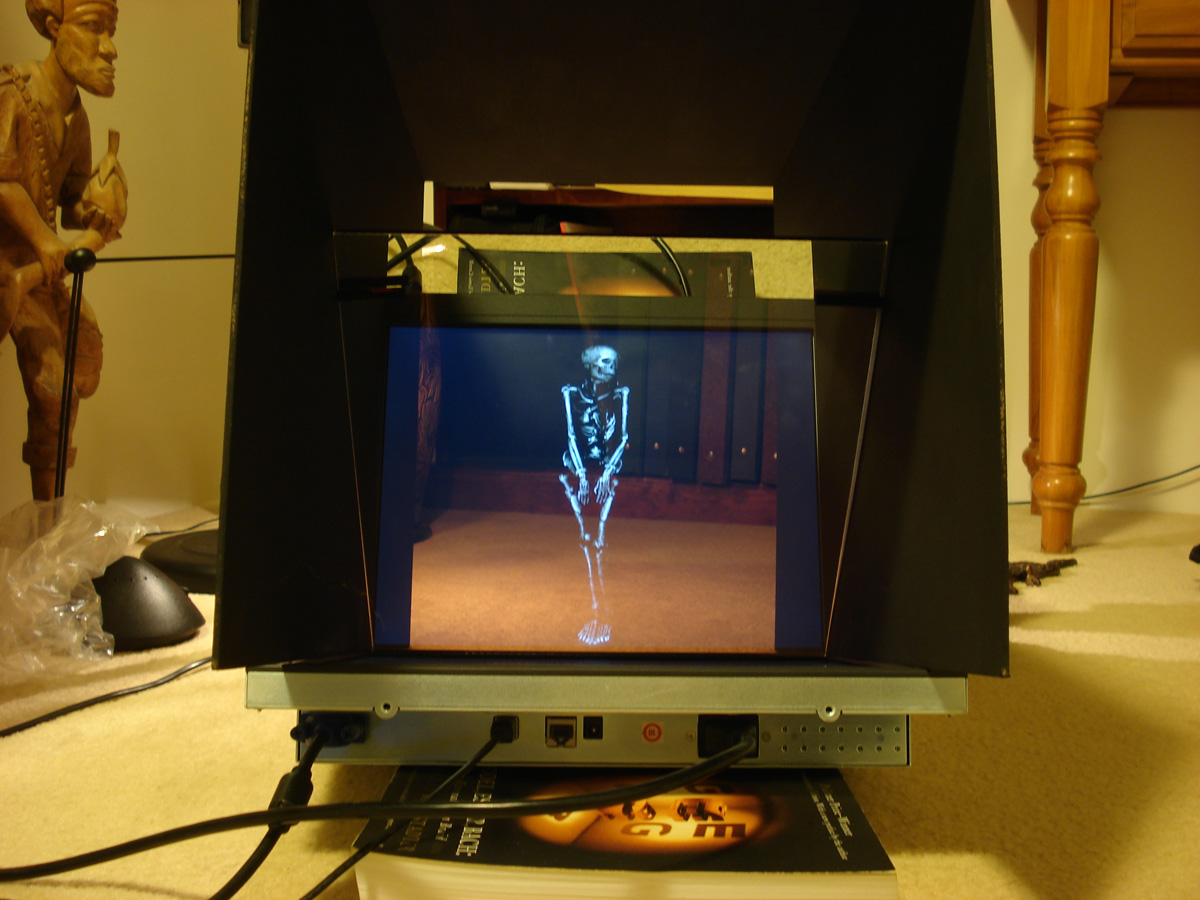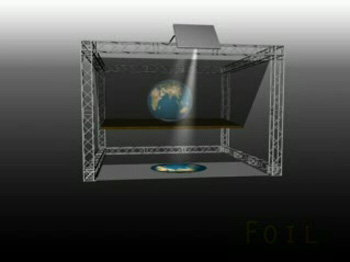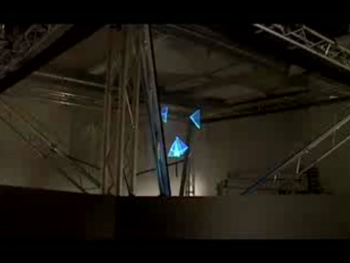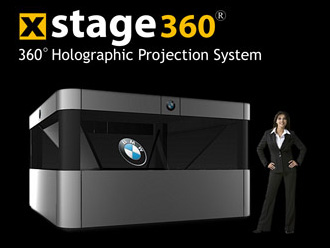Peppers Ghost: Rough prototypePaul BourkeSeptember 2008 Norwegian translation by Lars Olden.
The illusion know as "Peppers ghost" stems back to the mid 1800's when Henry Dircks and John Pepper first demonstrated the principle. It has been used over the years as the basis of many magic tricks and ghostly effects, most noticeably perhaps the haunted house in Disneyland. The basic principle is that with a half silvered mirror one can see the superposition of two scenes, the dominant objects being the brightest, or most highly illuminated. The mirror surface used goes by a few different names, half silvered mirror, one way mirror, and two way mirror. The basic principle is simply that the the surface transmits and reflects light, normally 50% of each. 
The early forms of this illusion would employ two rooms, the objects in one superimposed on the other. In more modern times there is a twist to this illusion that involves using a display or projected image rather than a second room. This allows a virtual object or space to be superimposed with real objects. Many of the companies trying to promote this effect seem to need to called it holographic which of course it is not. However in a darkened space the appearance of the virtual objects can appear to have depth. This depth arises from other depth cues such as motion and shading because of course there is no real depth being projected with the digital image.
Note
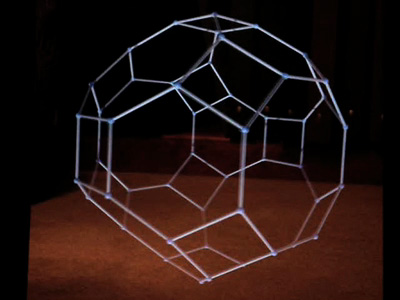 Movie example Products misleadingly referring to themselves as "holographic" displays
| ||||||
